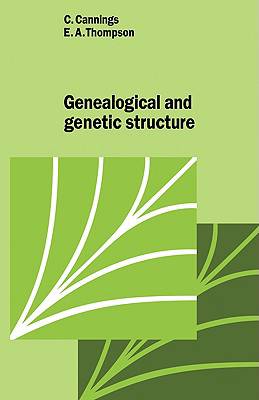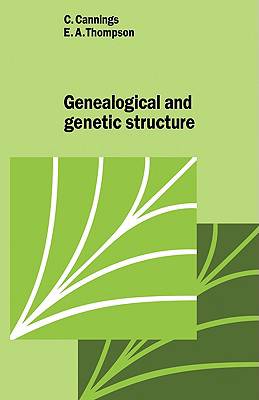
Door een staking bij bpost kan je online bestelling op dit moment iets langer onderweg zijn dan voorzien. Dringend iets nodig? Onze winkels ontvangen jou met open armen!
- Afhalen na 1 uur in een winkel met voorraad
- Gratis thuislevering in België vanaf € 30
- Ruim aanbod met 7 miljoen producten
Door een staking bij bpost kan je online bestelling op dit moment iets langer onderweg zijn dan voorzien. Dringend iets nodig? Onze winkels ontvangen jou met open armen!
- Afhalen na 1 uur in een winkel met voorraad
- Gratis thuislevering in België vanaf € 30
- Ruim aanbod met 7 miljoen producten
Zoeken
Omschrijving
Although the long-term processes of evolution are selection and mutation, the infrastructure of a population is a no less important force in determining the distributions of genetic characteristics observable within populations. In small populations, and in particular in human populations, complex patterns of genealogical relationship between individuals can be an important factor in the maintenance of genetic variability. The aim of this book is to develop the quantitative theory of the interrelationship between the genealogical and the genetic structures of a population. Aspects of other structural features, such as migration patterns, are also discussed, but are not central to the development. There are three major aspects; each comprises two chapters of the text. First, genealogical relationships are characterized in a way which can illuminate their genetic consequences. Second, the evolutionary aspects of genealogical structure are developed. Finally, the last two chapters present methods of characterizing the complete structure of a genealogy, and of computing relevant parameters of genealogical structure; these topics are of relevance to genetic epidemiology as well as to population genetics.
Specificaties
Betrokkenen
- Auteur(s):
- Uitgeverij:
Inhoud
- Aantal bladzijden:
- 172
- Taal:
- Engels
- Reeks:
- Reeksnummer:
- nr. 3
Eigenschappen
- Productcode (EAN):
- 9780521283632
- Verschijningsdatum:
- 31/12/1981
- Uitvoering:
- Paperback
- Formaat:
- Trade paperback (VS)
- Afmetingen:
- 140 mm x 216 mm
- Gewicht:
- 226 g

Alleen bij Standaard Boekhandel
+ 135 punten op je klantenkaart van Standaard Boekhandel
Beoordelingen
We publiceren alleen reviews die voldoen aan de voorwaarden voor reviews. Bekijk onze voorwaarden voor reviews.











